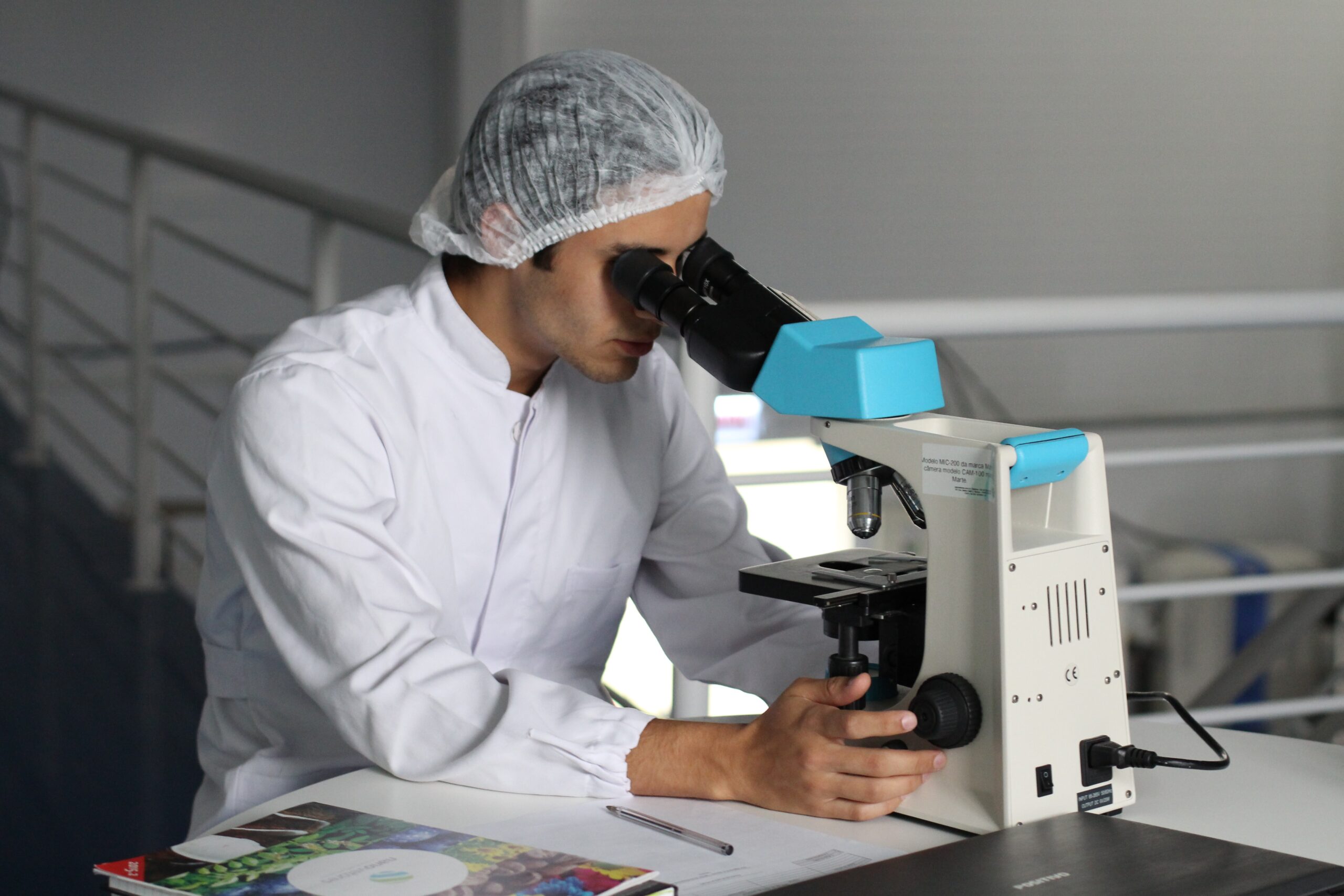Come and discover the innovative realm of alternative medicine in India, where healing goes beyond conventional methods. Immerse yourself in a world-class healthcare system that not only offers top-notch treatments but also provides a window into the rich cultural heritage of this incredible country. With the rise of medical tourism, India has become a hub for those seeking holistic healing practices that blend ancient wisdom with modern advancements. From Ayurveda to yoga, acupuncture to homeopathy, this article will unravel the vast and diverse landscape of alternative medicine in India, where centuries-old traditions intertwine with cutting-edge techniques for a truly transformative healthcare experience.

1. Ayurveda
1.1 Origins of Ayurveda
Ayurveda, the ancient system of medicine, originated in India thousands of years ago. The word “Ayurveda” is derived from the Sanskrit words “ayu” meaning life and “veda” meaning knowledge. It is believed to have been passed down from the gods to sages, who then shared this valuable knowledge with humanity. Ayurveda is considered to be one of the oldest holistic healing systems in the world, focusing on maintaining a balance between the body, mind, and spirit.
1.2 Principles of Ayurveda
The principles of Ayurveda revolve around the concept of achieving and maintaining a state of balance in all aspects of life. According to Ayurvedic philosophy, each person has a unique constitution, known as their “dosha.” There are three primary doshas: Vata, Pitta, and Kapha. These doshas represent different elements and qualities within the body. The key principles of Ayurveda involve identifying a person’s dosha and understanding how imbalances in these doshas can lead to illness or disease. Ayurvedic treatments aim to restore balance through various methods such as diet, herbs, lifestyle changes, and therapies.
1.3 Traditional Ayurvedic Therapies
Ayurveda offers a wide range of traditional therapies that are tailored to each individual’s unique constitution and specific health needs. Some of the commonly used therapies include Abhyanga (relaxing oil massage), Shirodhara (pouring of warm medicated oil on the forehead), Panchakarma (detoxification and rejuvenation treatments), and Yoga.
2. Yoga
2.1 Introduction to Yoga
Yoga is an ancient practice that originated in India and has gained immense popularity worldwide. It is not just a physical exercise but a holistic approach to harmonizing the body, mind, and spirit. The word “yoga” means union, and the practice aims to achieve a union between the individual consciousness and the universal consciousness. Yoga involves various postures (asanas), breathing techniques (pranayama), and meditation practices to promote physical, mental, and emotional well-being.
2.2 Types of Yoga
There are several types of yoga practiced around the world, each with its own focus and benefits. Some of the commonly known types include Hatha Yoga (physical postures and breathing techniques), Vinyasa Yoga (flowing movements synchronized with breath), Ashtanga Yoga (rigorous sequence of postures), Kundalini Yoga (focuses on awakening the dormant spiritual energy), and Iyengar Yoga (emphasis on precise alignment and use of props).
2.3 Benefits of Yoga
Yoga offers a multitude of benefits for individuals of all ages and fitness levels. Regular practice of yoga can improve flexibility, strength, and balance. It promotes relaxation, reduces stress, and enhances mental clarity and focus. Yoga has also been found to boost the immune system, improve cardiovascular health, and aid in the management of chronic conditions such as hypertension, diabetes, and anxiety disorders. Additionally, yoga is known to promote self-awareness, mindfulness, and a sense of overall well-being.

3. Naturopathy
3.1 What is Naturopathy?
Naturopathy is a holistic system of medicine that focuses on utilizing natural substances and therapies to promote healing and prevent diseases. It is based on the principle that the body has an inherent ability to heal itself given the right conditions. Naturopathy emphasizes the importance of identifying and addressing the underlying causes of illness rather than merely treating the symptoms.
3.2 Principles of Naturopathy
The principles of naturopathy revolve around the belief in the healing power of nature. Naturopathic practitioners aim to support the body’s natural healing processes by using therapies such as nutrition, herbal medicine, hydrotherapy, physical therapies, and lifestyle counseling. The principles also include treating the whole person, addressing the root cause, and focusing on prevention and education to empower individuals to take charge of their health.
3.3 Naturopathic Treatments
Naturopathic treatments encompass a wide range of therapies, all aimed at facilitating the body’s innate healing abilities. These treatments may include dietary and nutritional counseling, herbal medicine, homeopathy, acupuncture, hydrotherapy, exercise therapy, and counseling on lifestyle modifications. Each treatment is tailored to the individual, taking into consideration their unique constitution, health concerns, and personal goals.
4. Unani Medicine
4.1 History of Unani Medicine
Unani medicine, also known as Yunani medicine, traces its roots back to the ancient Greeks and Persians. It was introduced to India by Persian and Arab physicians during the medieval period and became an integral part of Indian traditional medicine. Unani medicine is based on the teachings of Hippocrates and Galen, combining elements of Greek, Persian, and Arab medicine.
4.2 Key Principles of Unani Medicine
Unani medicine operates on the premise that the human body is composed of four main elements – earth, air, water, and fire. These elements correspond to the four humors (temperaments) in the body – Phlegm, Blood, Yellow Bile, and Black Bile. The key principles of Unani medicine involve maintaining a balance between these humors to ensure good health. Imbalances are believed to lead to diseases and disorders.
4.3 Unani Medicinal Practices
Unani medicine utilizes various methods to restore balance and promote health. These practices include herbal medicine (using plants, minerals, and animal substances), diet and nutrition, exercise, lifestyle modifications, and physical therapies such as massage and cupping. Unani physicians also prescribe medications based on individual patient needs and employ techniques like bloodletting, cauterization, and detoxification methods to address specific health conditions.

5. Siddha Medicine
5.1 The Origins of Siddha Medicine
Siddha medicine is an ancient traditional system of medicine that originated in the Tamil region of South India. It is believed to have been developed by Siddhars, ancient spiritual adepts who achieved enlightenment and possessed extensive knowledge of medicinal plants and practices. Siddha medicine has been practiced for over 2000 years and is considered one of the oldest healing systems in India.
5.2 Fundamental Principles of Siddha Medicine
Siddha medicine is based on the principles of the Siddha philosophy, which states that the human body is a microcosm of the universe, and all aspects of nature are interconnected. The fundamental principles revolve around the concept of maintaining balance between the three humors – Vatham, Pitham, and Kabam – which correspond to air, fire, and phlegm, respectively. Any imbalance in these humors is believed to lead to illness and disease.
5.3 Siddha Remedies and Therapies
Siddha medicine employs a wide range of remedies and therapies to restore balance and promote well-being. These include herbal medicine, mineral-based medicines, dietary recommendations, physical therapies such as massage, yoga, pranayama, meditation, and spiritual practices. Siddha practitioners also emphasize the importance of leading a disciplined and balanced lifestyle to maintain optimal health.
6. Homeopathy
6.1 Introduction to Homeopathy
Homeopathy is a system of medicine that was developed in the late 18th century by Samuel Hahnemann, a German physician. It is based on the principle of “like cures like,” meaning that a substance that can cause symptoms in a healthy person can be used in diluted form to treat similar symptoms in a sick person. Homeopathy is a holistic approach that takes into account the person’s physical, mental, and emotional well-being.
6.2 Homeopathic Principles
Homeopathic medicine is prepared by diluting substances derived from plants, animals, and minerals in a process known as potentization. The remedies are highly diluted, making them safe and free from harmful side effects. Homeopathy focuses on stimulating the body’s self-healing abilities rather than merely suppressing symptoms. Treatment is personalized, and remedies are selected based on the individual’s unique symptoms and constitution.
6.3 Homeopathic Treatments
Homeopathic treatments are aimed at strengthening the body’s vital force, which is believed to be responsible for maintaining health. Remedies are tailored to the individual, and the selection is based on a detailed analysis of the person’s overall symptoms, physical and emotional state, and medical history. Homeopathy can be used to treat a wide range of acute and chronic conditions, including allergies, respiratory disorders, digestive problems, skin conditions, and mental health issues.
7. Traditional Chinese Medicine (TCM)
7.1 Overview of TCM
Traditional Chinese Medicine, commonly known as TCM, is an ancient healing system that has been practiced in China for over 2,500 years. TCM is based on the belief that the body is an interconnected system, and health is achieved through the balance and flow of Qi (energy) in the body. TCM encompasses a range of therapies, including acupuncture, herbal medicine, dietary therapy, and physical exercises such as Tai Chi and Qigong.
7.2 Key Components of TCM
TCM is rooted in several key principles, including Yin and Yang (opposing forces that must be in balance), the Five Elements (Wood, Fire, Earth, Metal, Water), and the concept of Qi and its flow through the meridians (energy pathways) in the body. TCM also considers the importance of the organs and their interconnectedness as a way to understand overall health and wellness.
7.3 Traditional Chinese Therapies
Traditional Chinese therapies aim to restore balance and harmonize the body’s energy flow. Acupuncture, one of the most widely recognized TCM therapies, involves the insertion of thin needles into specific points on the body to stimulate Qi and promote healing. Herbal medicine is another important aspect of TCM, with a wide range of plants and minerals used to create formulas tailored to the individual’s specific needs. TCM also incorporates practices such as cupping, moxibustion, and Tui Na (Chinese therapeutic massage) to address various health conditions.
8. Ayurvedic Medicinal Plants
8.1 Importance of Medicinal Plants in Ayurveda
Ayurveda places a significant emphasis on the use of medicinal plants for promoting health and treating illnesses. Ayurvedic medicinal plants have been used for centuries due to their natural healing properties and minimal side effects. These plants contain various bioactive compounds that have specific therapeutic actions, making them an integral part of Ayurvedic remedies and formulations.
8.2 Commonly Used Ayurvedic Medicinal Plants
Ayurveda recognizes a vast number of medicinal plants, each with its own unique properties and uses. Some commonly used Ayurvedic medicinal plants include Ashwagandha (Withania somnifera), Tulsi (Ocimum sanctum), Triphala (a combination of three fruits – Amalaki, Bibhitaki, Haritaki), Neem (Azadirachta indica), Brahmi (Bacopa monnieri), and Turmeric (Curcuma longa). These plants are used in various forms such as powders, decoctions, oils, and pastes to address different health concerns.
8.3 Traditional Remedies
Ayurvedic medicinal plants are used in the formulation of various traditional remedies to address specific health conditions. These remedies may be in the form of herbal teas, herbal oils for topical application, powders or capsules for internal consumption, or herbal pastes for external use. Traditional Ayurvedic remedies target specific imbalances in the body and aim to restore harmony and overall well-being.
9. Integration of Alternative Medicine with Modern Healthcare
9.1 Collaboration with Conventional Medicine
The integration of alternative medicine with modern healthcare is gaining recognition and acceptance in India and around the world. Many conventional medical institutions are now incorporating aspects of alternative medicine into their treatment plans, recognizing the importance of a holistic approach to patient care. Collaboration between alternative medicine practitioners and conventional healthcare providers has led to a more comprehensive approach to treating patients and addressing their unique needs.
9.2 Holistic Approach to Healthcare
The integration of alternative medicine and modern healthcare encourages a more holistic approach to healthcare. By combining the strengths of both systems, patients can benefit from a broader range of treatment options, tailored to their individual needs. Holistic healthcare aims to address not only the physical symptoms but also the mental, emotional, and spiritual aspects of well-being, recognizing the interconnectedness of these different facets of health.
9.3 Benefits and Challenges
The integration of alternative medicine and modern healthcare offers numerous benefits. Patients have access to a wider range of treatment options, allowing for personalized care based on their specific needs and preferences. Alternative medicine provides holistic support, promoting overall well-being and preventative care. However, challenges such as lack of standardization, regulation, and scientific evidence can present obstacles to the integration process. It is crucial for ongoing research, collaboration, and education to bridge the gap between these two approaches to healthcare.
10. Rising Popularity of Alternative Medicine in India
10.1 Growth of Wellness Tourism in India
India has witnessed a significant growth in wellness tourism, with people from around the world seeking alternative medicine treatments and therapies. The country’s rich tradition of ancient healing systems, combined with its diverse natural landscapes and cultural heritage, has positioned India as a popular destination for holistic wellness and rejuvenation. Wellness retreats, Ayurvedic resorts, and yoga centers have flourished, offering visitors an opportunity to experience the benefits of alternative medicine while immersing themselves in India’s vibrant culture.
10.2 Government Initiatives and Support
The Indian government has recognized the potential of alternative medicine and has taken several initiatives to promote and support its growth. The Ministry of AYUSH (Ayurveda, Yoga & Naturopathy, Unani, Siddha, and Homeopathy) was established to develop and regulate traditional systems of medicine. The government has also set up research institutes, colleges, and hospitals dedicated to alternative medicine. These initiatives aim to safeguard and promote the wealth of knowledge and expertise in traditional Indian medicine.
10.3 Global Recognition and Accreditation
The practice of alternative medicine in India has gained global recognition and accreditation. Ayurveda, Yoga, and other traditional systems of medicine are now recognized by the World Health Organization (WHO) and are practiced and taught worldwide. The growing interest in alternative medicine, backed by scientific evidence and research, has contributed to its increased acceptance and integration into mainstream healthcare systems around the world.
In conclusion, alternative medicine in India offers a diverse array of traditional healing systems. Ayurveda, Yoga, Naturopathy, Unani Medicine, Siddha Medicine, Homeopathy, and Traditional Chinese Medicine (TCM) each have their own unique principles, therapies, and benefits. The integration of alternative medicine with modern healthcare is gaining momentum and offers a comprehensive and holistic approach to healthcare. With the rising popularity of alternative medicine in India, supported by government initiatives and global recognition, these ancient healing systems continue to contribute to the well-being of individuals seeking natural and holistic treatments.
